In the intricate realm of landscape design, the interplay between hardscape and softscape elements forms the foundation of aesthetic harmony and functional balance. Hardscape, the resilient backbone of outdoor spaces, includes elements like pathways and patios that shape the architectural identity of a landscape. Conversely, softscape introduces the living, breathing heart of design with lush plants and vibrant greenery. Together, these elements orchestrate a symphony of aesthetics and functionality, transforming any space into a captivating outdoor oasis. A successful landscape design hinges on the thoughtful integration of both, offering a dynamic tapestry that engages the senses and enhances the outdoor experience. Join us as we explore the delicate balance between sturdy structures and organic allure, uncovering the secrets to crafting visually stunning landscapes that not only captivate the eye but also harmonize with the natural world.
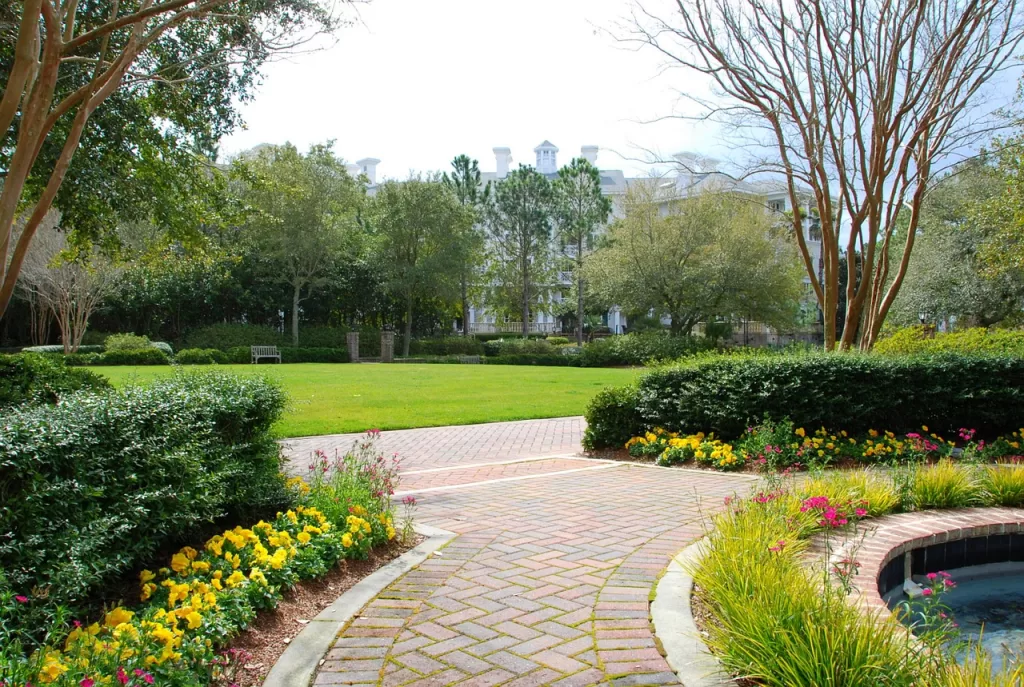
Mastering the Art of Hardscape Elegance in Outdoor Design
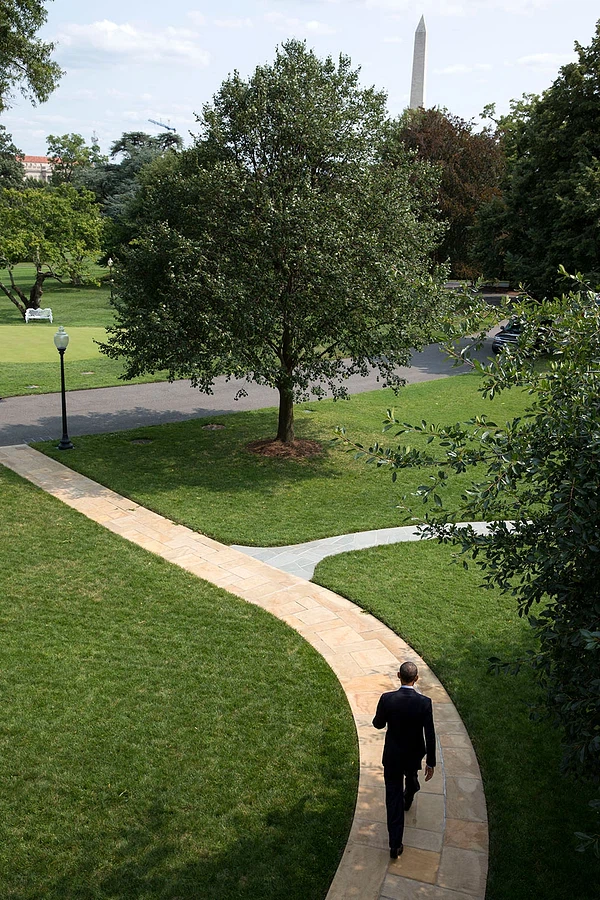
Hardscaping refers to the design and installation of non-living elements within a landscape, focusing on the construction of enduring structures that shape and define outdoor spaces. This includes features like patios, pathways, retaining walls, and other durable elements crafted from materials such as concrete, stone, or wood. Hardscape elements provide structural integrity, delineate functional zones, and contribute to the overall aesthetics of a landscape. Serving as the solid foundation of outdoor design, hardscaping enhances the usability and visual appeal of spaces, creating a harmonious blend of form and function in both residential and commercial environments.
Elevate Landscapes with Striking Hardscape Elements
Hardscape elements form the sturdy backbone of outdoor design, blending functionality with aesthetic appeal. From inviting patios and connecting walkways to retaining walls that shape the terrain, these elements provide structure and define spaces. Driveways and outdoor features like kitchens further enhance usability, creating a harmonious, resilient outdoor environment.
1. Patios:
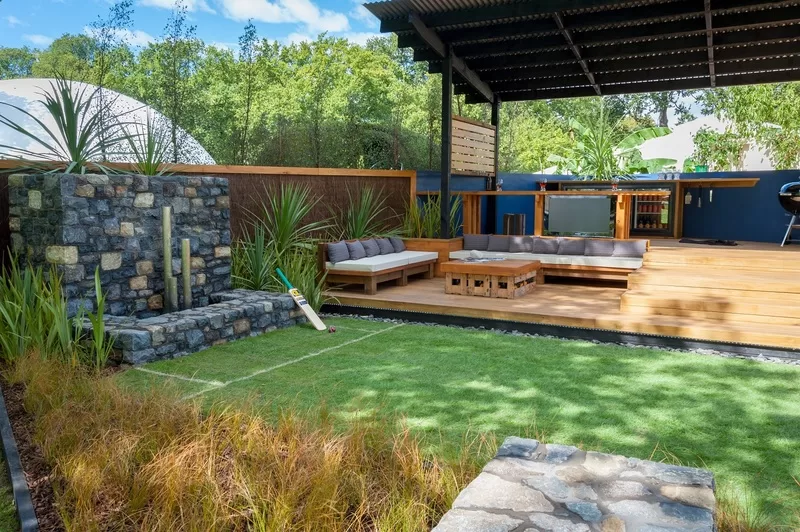
Designed for outdoor lounging and dining, patios are flat, paved surfaces typically constructed using materials like concrete, pavers, or natural stone.
2. Walkways:
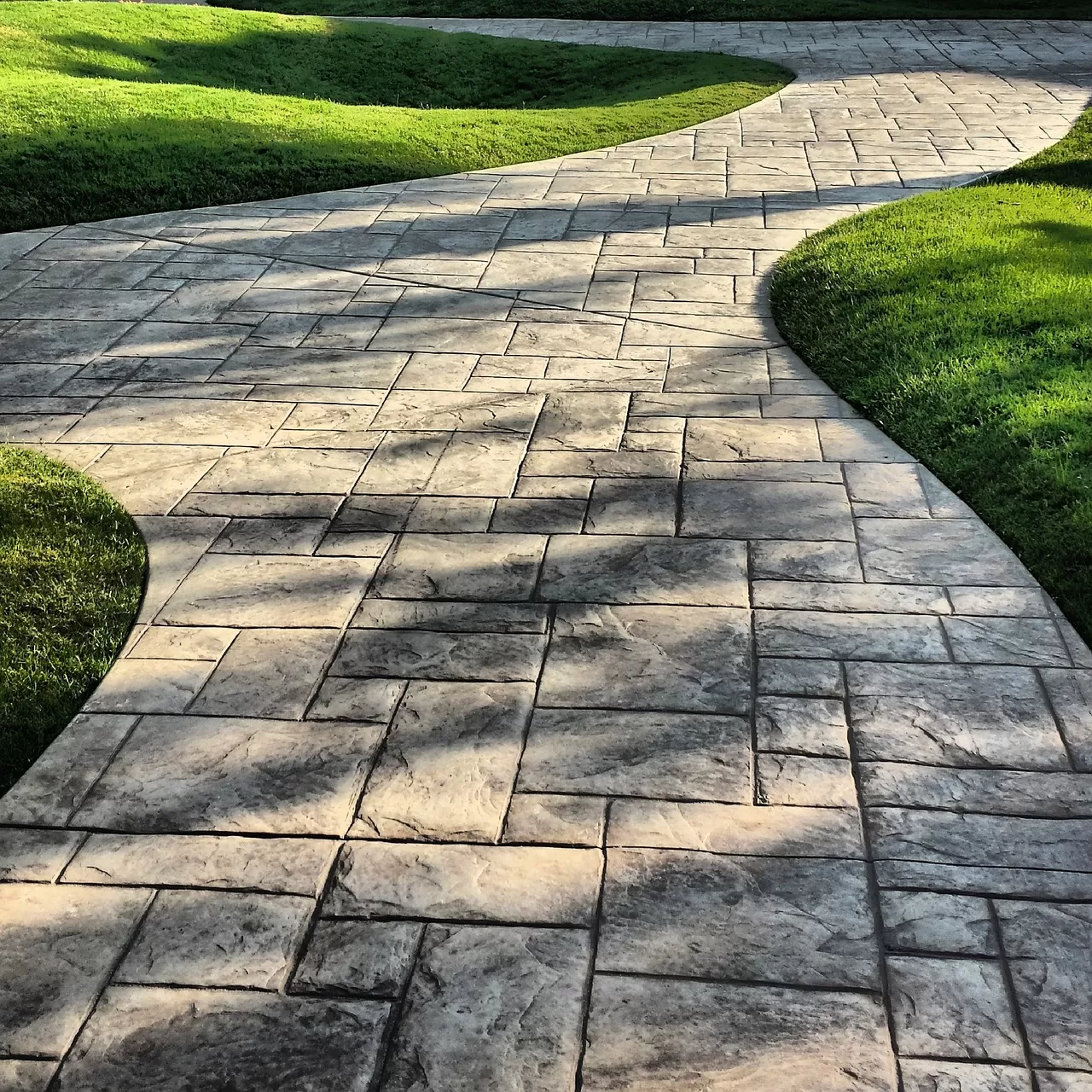
Pathways made from materials such as concrete, gravel, or brick guide movement through the landscape, connecting various areas and adding both functionality and aesthetics.
3. Retaining Walls:
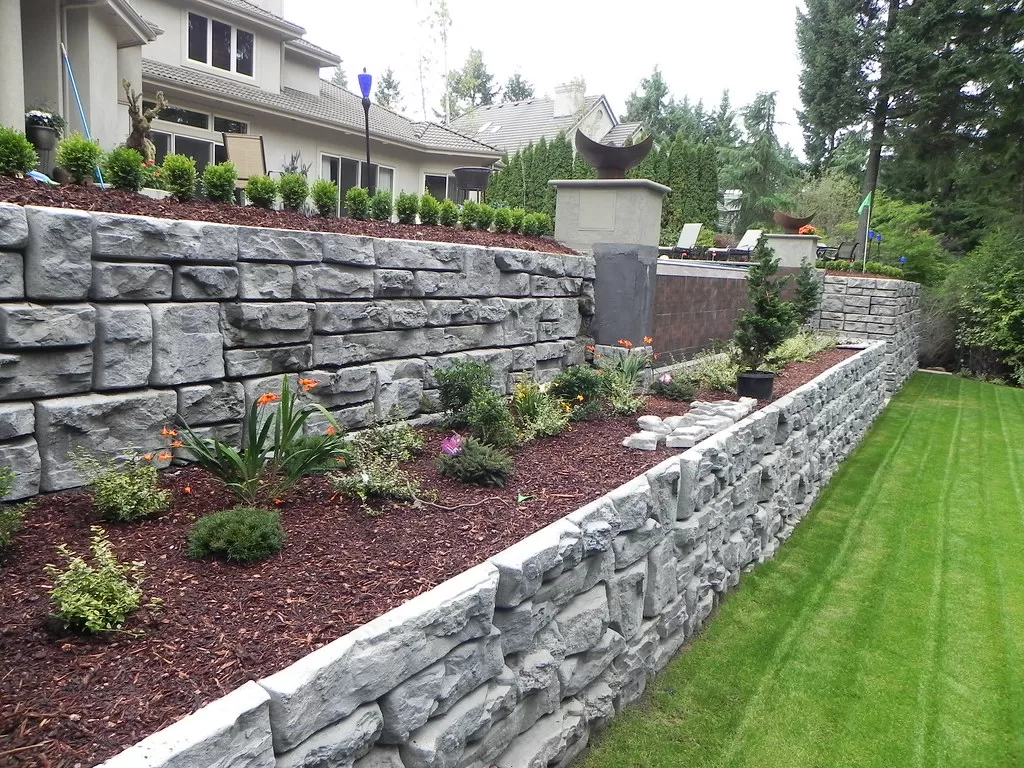
These structures are crafted to hold back soil, prevent erosion, and create terraced levels. Commonly made of concrete, stone, or wood, they add dimension to landscapes.
4. Driveways:
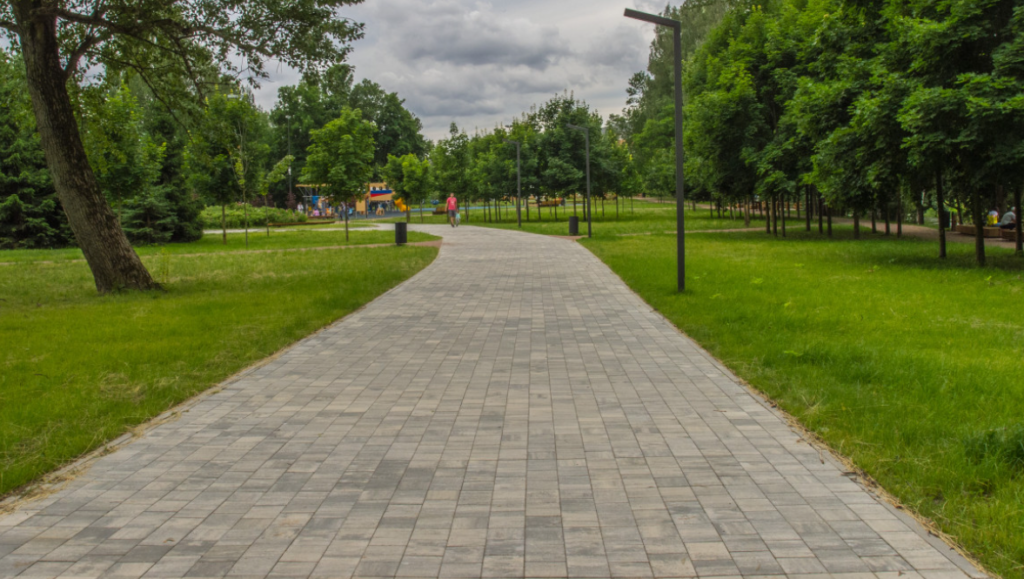
Paved surfaces, often made of materials like asphalt or concrete, provide vehicular access and contribute to the overall design of the property.
5. Outdoor Kitchen and Fireplaces:
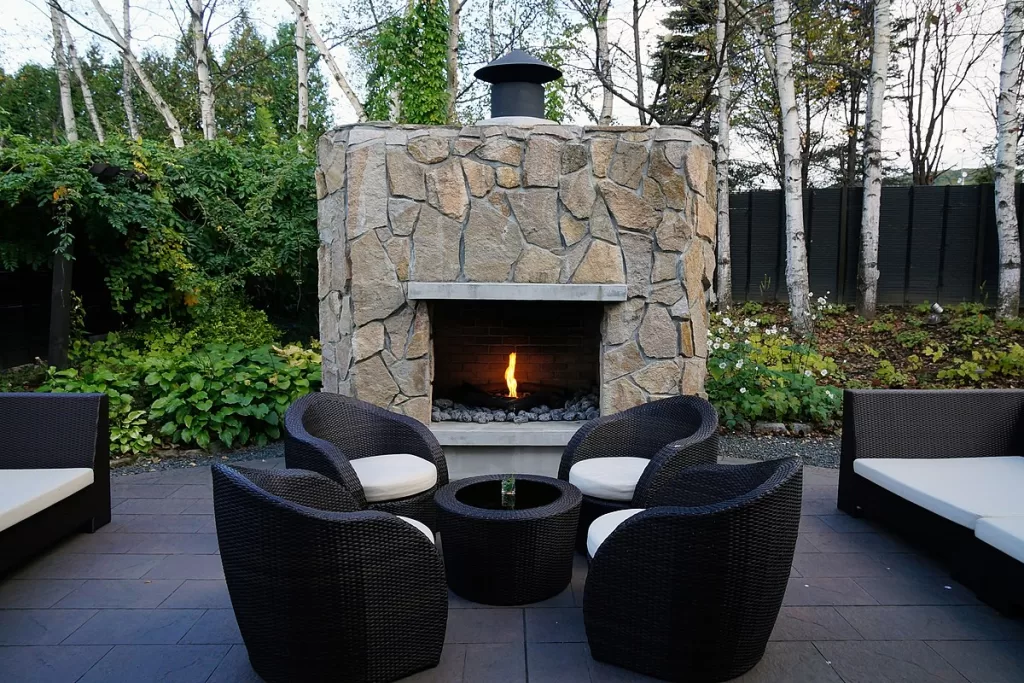
Hardscaping can extend to functional outdoor spaces, such as kitchens and fireplaces, using materials like stone or brick to create durable and visually appealing structures for cooking and gathering.
Paving Perfection: Unveiling the Artistry of Exceptional Hardscape Materials
Hardscaping materials form the resilient framework of outdoor spaces, playing a pivotal role in shaping the aesthetic appeal and functionality of landscapes. These materials are chosen for their durability, versatility, and ability to withstand various weather conditions. Here’s an introduction to five commonly used hardscaping materials:
1. Concrete:
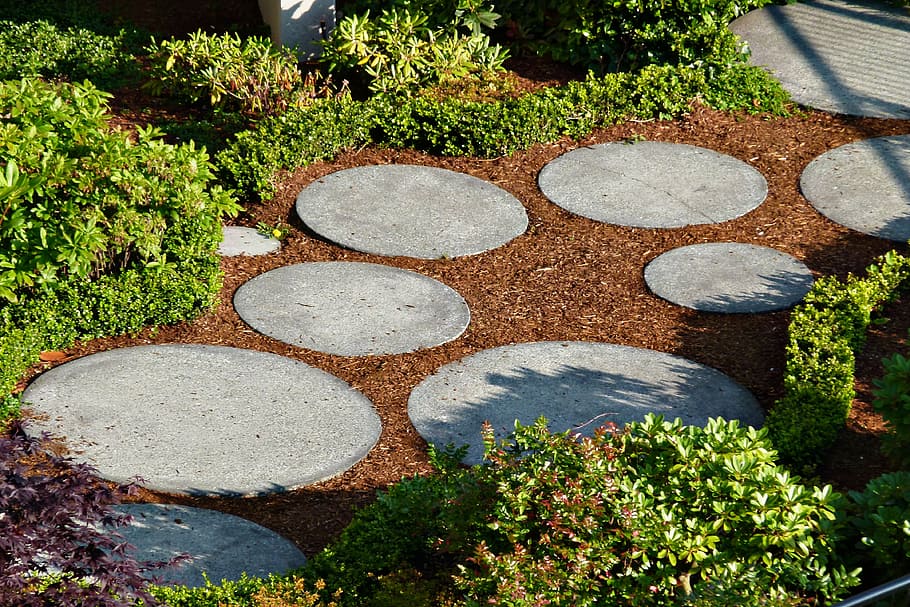
A versatile and cost-effective choice, concrete can be moulded into various shapes for patios, walkways, and retaining walls. It offers durability and is easily customisable with textures and colours.
2. Stone:
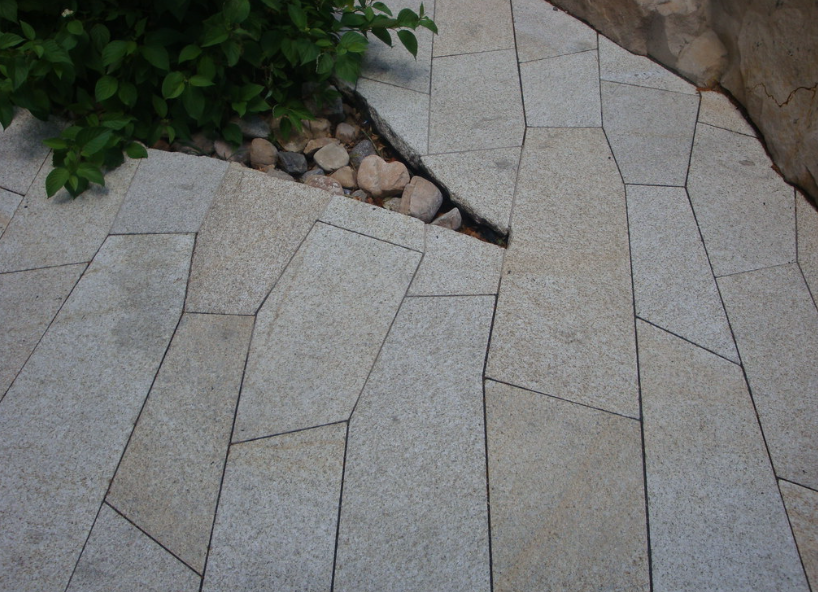
Natural stone, such as granite, limestone, or slate, adds a timeless and elegant touch to hardscaping. It is renowned for its durability, resistance to weathering, and unique aesthetic qualities.
3. Brick:
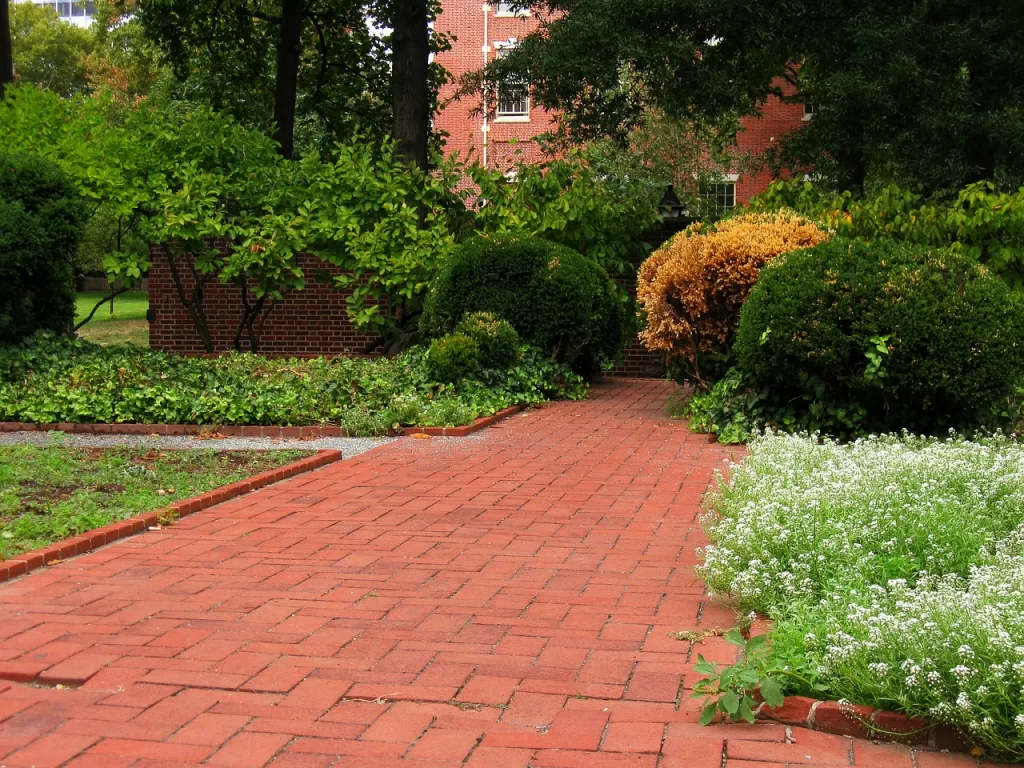
Known for its classic charm, brick is a durable hardscaping material suitable for pathways, driveways, and patios. It provides a warm, traditional look and is easy to install.
4. Wood:
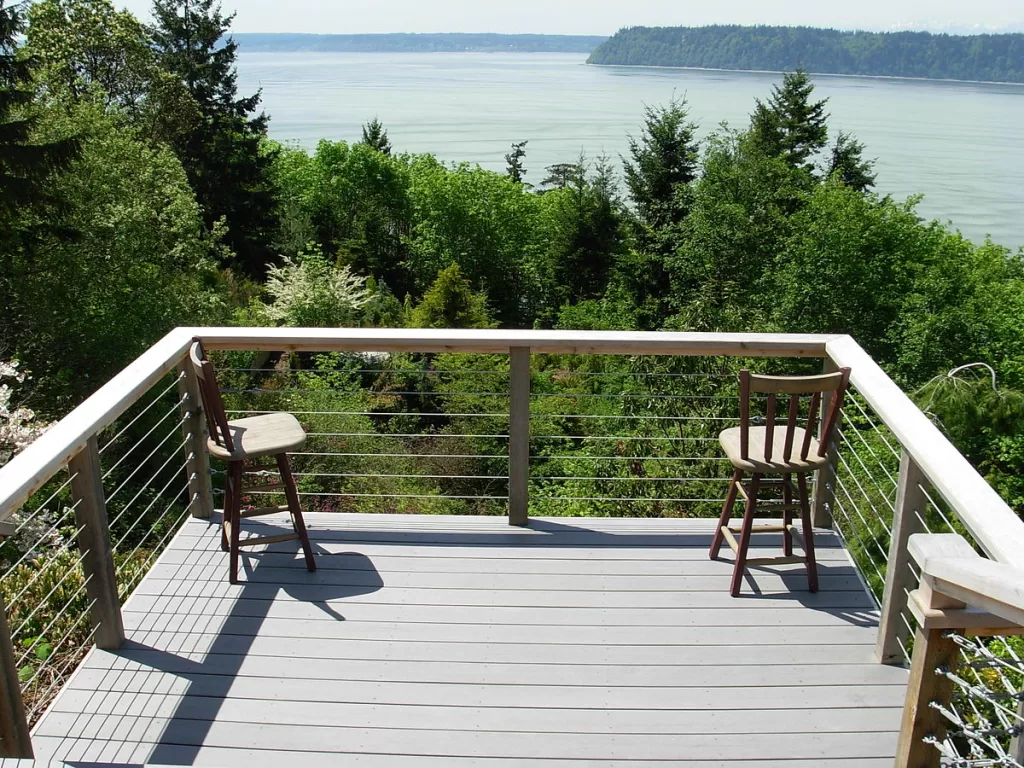
Timber is a popular choice for creating a rustic or contemporary aesthetic. Often used for decks, pergolas, and fencing, wood brings a natural warmth to outdoor spaces.
5. Pavers:
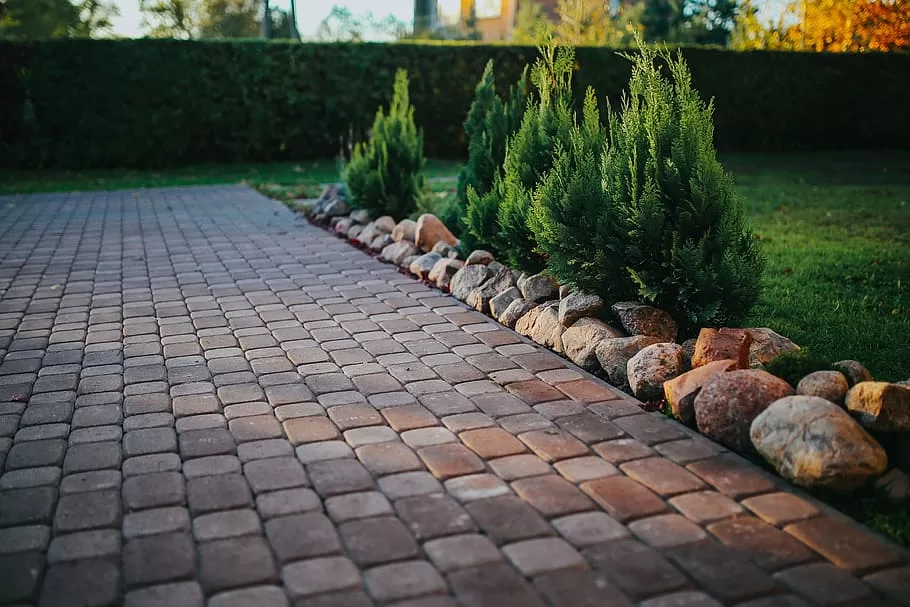
Available in various materials like concrete, clay, or natural stone, pavers are modular units used for creating durable and visually appealing surfaces for driveways, walkways, and patios. They offer flexibility in design and installation.
Nature’s Palette: Unleashing the Magic of Softscape Materials in a Garden Canvas
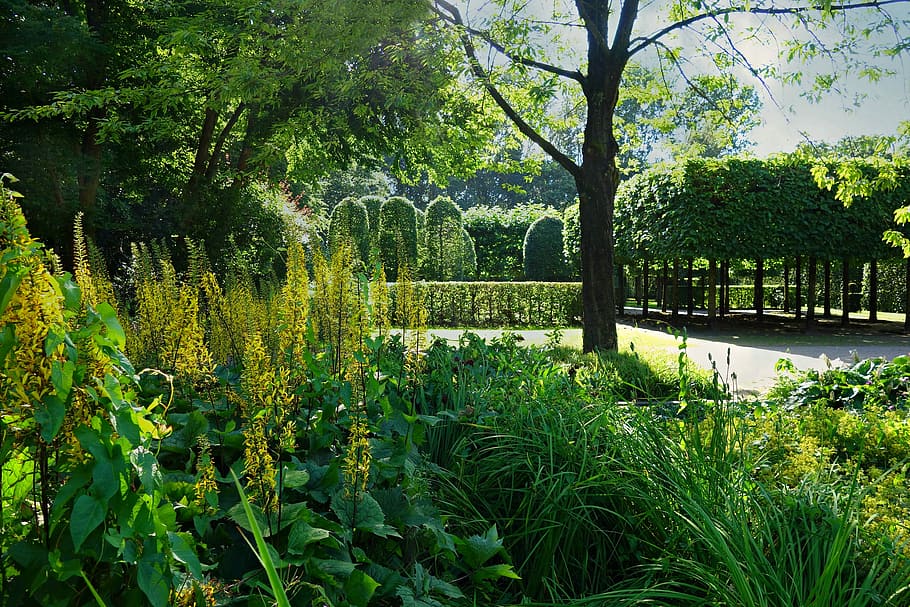
Softscaping is the living, vibrant heart of landscape design, involving the incorporation of plant life to enhance outdoor spaces. Flowering plants infuse colour and seasonal variety, while trees provide structure and longevity. Shrubs add texture and borders. Grasses contribute graceful movement and low-maintenance appeal. Groundcovers create a lush carpet, preventing erosion and reducing maintenance needs. This harmonious interplay of softscape elements brings dynamic beauty and natural balance to any environment, ensuring an ever-evolving, visually captivating outdoor oasis.
1. Flowering Plants:
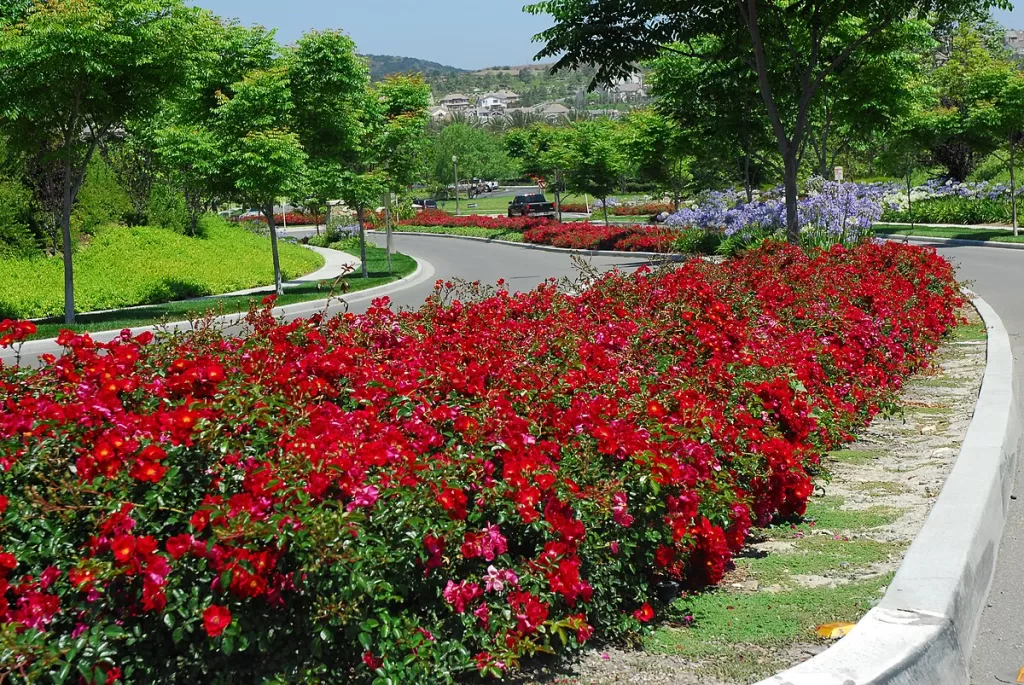
Flowering plants are the vibrant soul of softscape, introducing bursts of colour and seasonal diversity. From perennials to annuals, these botanical gems contribute to the visual tapestry of a landscape, offering ever-changing hues and textures that captivate the senses.
2. Trees:
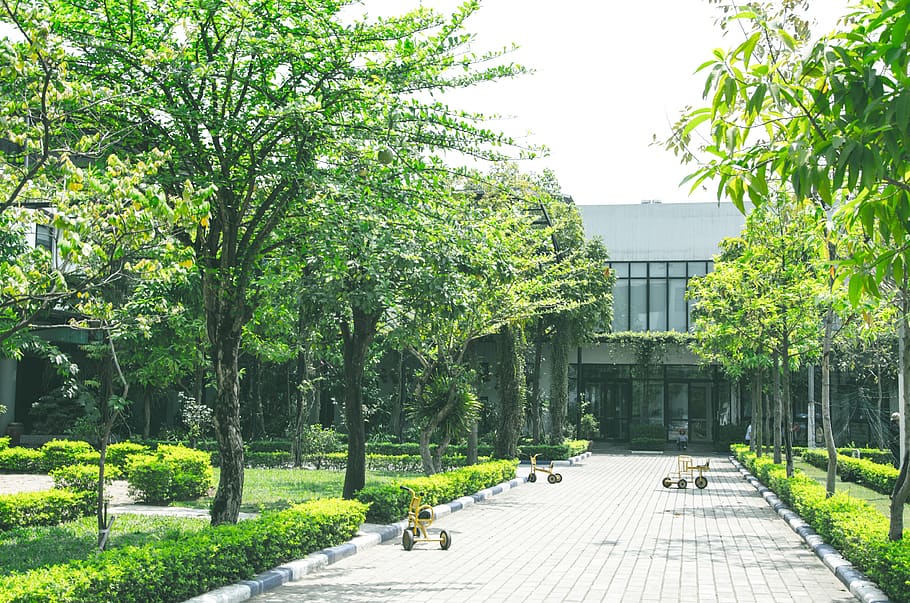
Trees stand as majestic sentinels in the landscape, providing enduring beauty and essential structure. Beyond their grandeur, they offer shade, habitat for wildlife, and contribute to air quality. From graceful ornamentals to towering shade trees, their presence adds longevity and a sense of natural permanence to outdoor environments.
3. Shrubs:
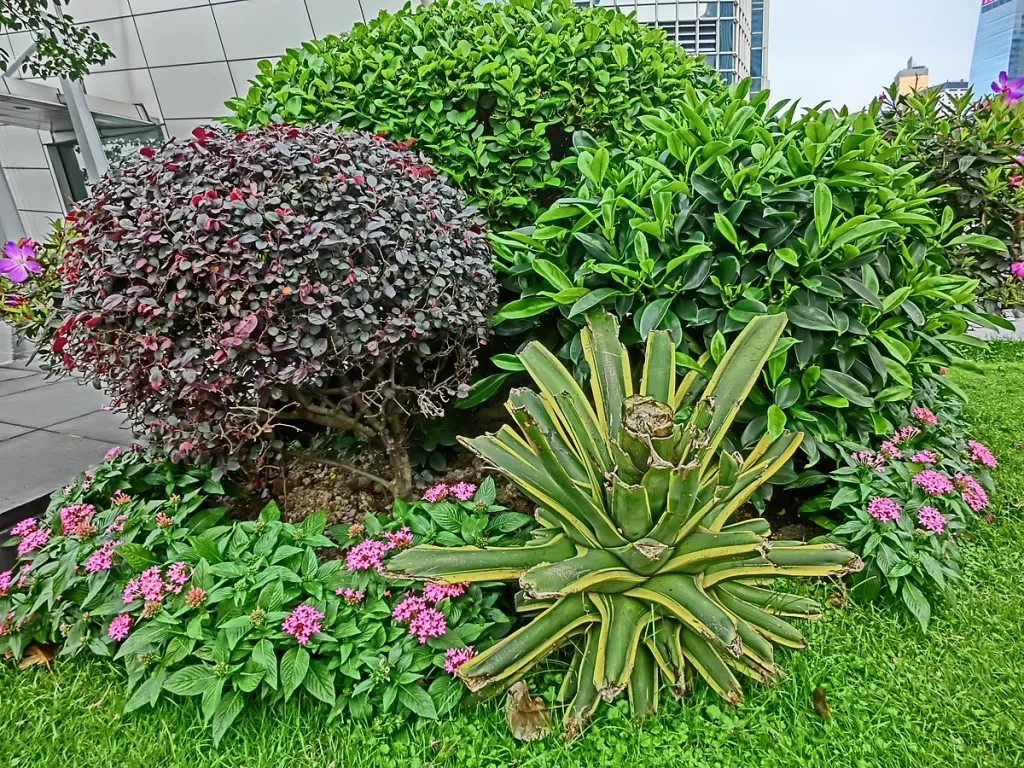
Shrubs, versatile workhorses of landscaping, bring texture, form, and year-round interest. Whether used for hedging, borders, or standalone focal points, these compact plants enhance visual appeal. With varied sizes and foliage, shrubs contribute to the overall design, creating depth and structure while requiring less maintenance than some other landscaping elements.
4. Grasses:
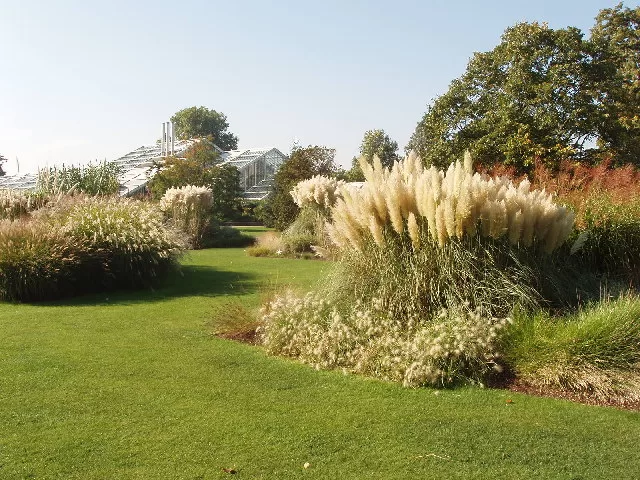
Ornamental grasses sway gracefully in the landscape, adding dynamic movement and textural interest. These resilient plants come in various heights, colors, and shapes, offering versatility in design. Ideal for borders, accents, or as standalone features, ornamental grasses bring a low-maintenance, natural elegance that transitions beautifully through the seasons.
5. Groundcovers
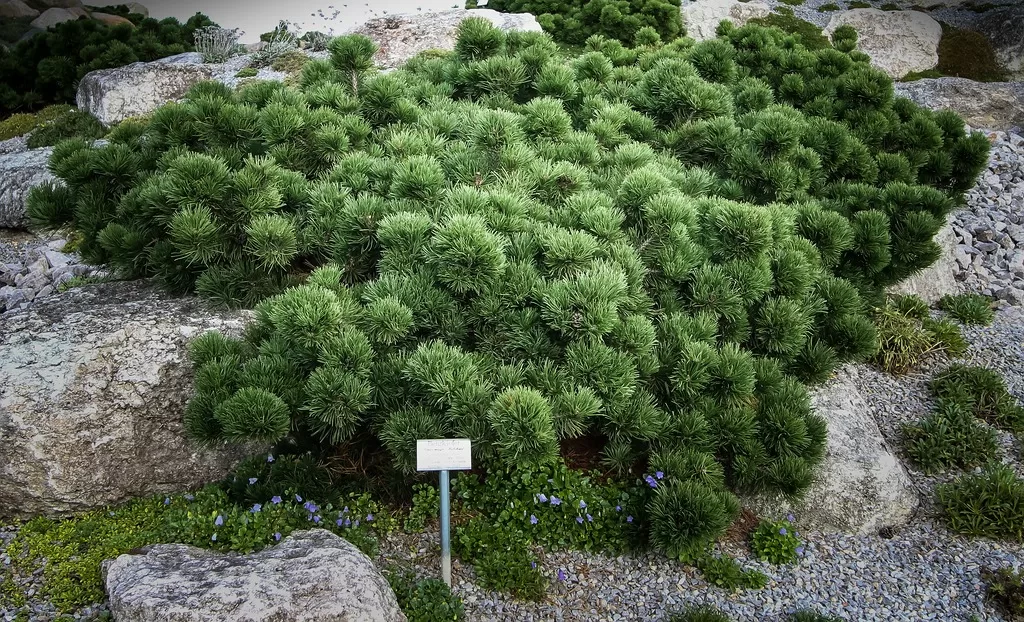
Groundcovers play a crucial role in landscaping, forming a lush, low-profile carpet that blankets the soil. These plants not only prevent erosion but also reduce weed growth and provide visual cohesion. From creeping vines to dense foliage, groundcovers offer a practical and aesthetic solution, creating a verdant tapestry that unifies outdoor spaces.
Battle of the Elements: Hardscape vs. Softscape
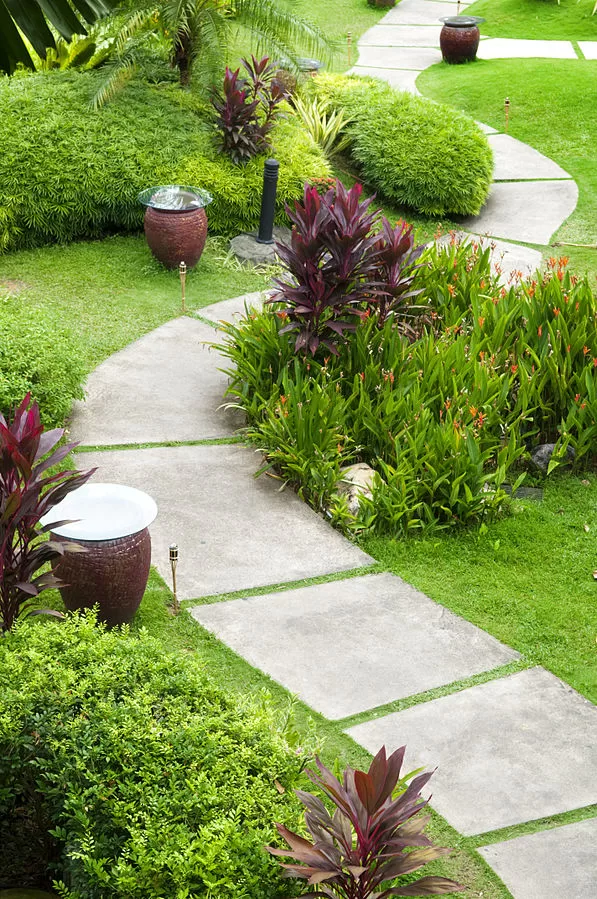
Composition:
- Hardscape: Comprises non-living, man-made elements such as pathways, walls, and structures made from materials like concrete, stone, or wood.
- Softscape: Involves living, natural elements like plants, trees, and grasses, contributing to the greenery and organic aspects of the landscape.
Functionality:
- Hardscape: Provides structural support, defines spaces, and serves functional purposes, such as seating areas or driveways.
- Softscape: Primarily contributes to aesthetics, creating a dynamic, ever-changing visual environment.
Installation and Maintenance:
- Hardscape: Typically requires more initial installation effort but tends to have lower ongoing maintenance needs.
- Softscape: Involves ongoing care, including pruning, watering, and seasonal maintenance, but installation is often less labor-intensive.
Material Composition:
- Hardscape: Utilizes durable materials like concrete, stone, or metal that withstand weathering and environmental factors.
- Softscape: Consists of living organisms with varied textures, colors, and growth patterns that respond to natural conditions.
Adaptability:
- Hardscape: Offers permanence and stability, with changes requiring significant effort and cost.
- Softscape: Provides flexibility for adjustments, allowing for easier modifications and adaptations to evolving design preferences or environmental conditions.
A Glimpse into Two Breathtaking Landscape Gems of India
1. Mughal Gardens, Rashtrapati Bhavan, Delhi
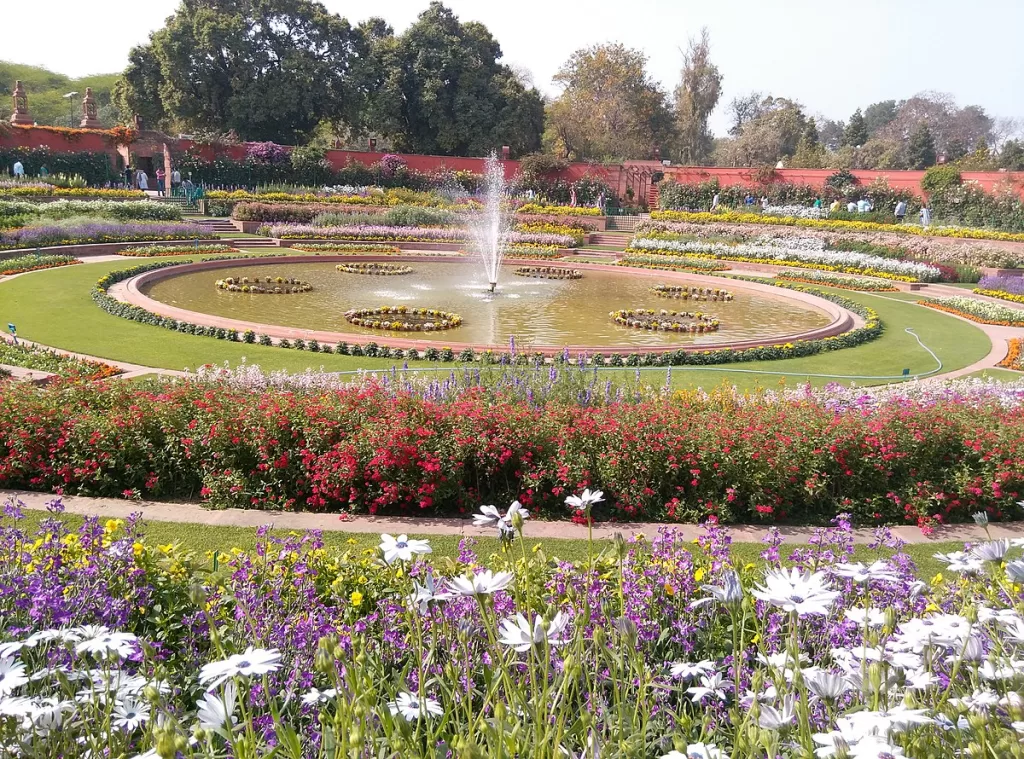
The Mughal Gardens at Rashtrapati Bhavan, Delhi, epitomise a harmonious fusion of hardscape and softscape elements. The meticulously designed pathways, water channels, and architectural features form an intricate hardscape, showcasing Mughal geometric precision with materials like stone and marble. Complementing this, the softscape unfolds in vibrant layers of meticulously manicured flowerbeds, creating a dynamic canvas of colours and fragrances. Terraced levels, ornate fountains, and lush greenery intertwine seamlessly, offering visitors a sensory journey through the union of structured architectural design and the organic allure of nature, epitomising the timeless elegance of Mughal landscaping traditions.
2. Brindavan Gardens, Mysuru
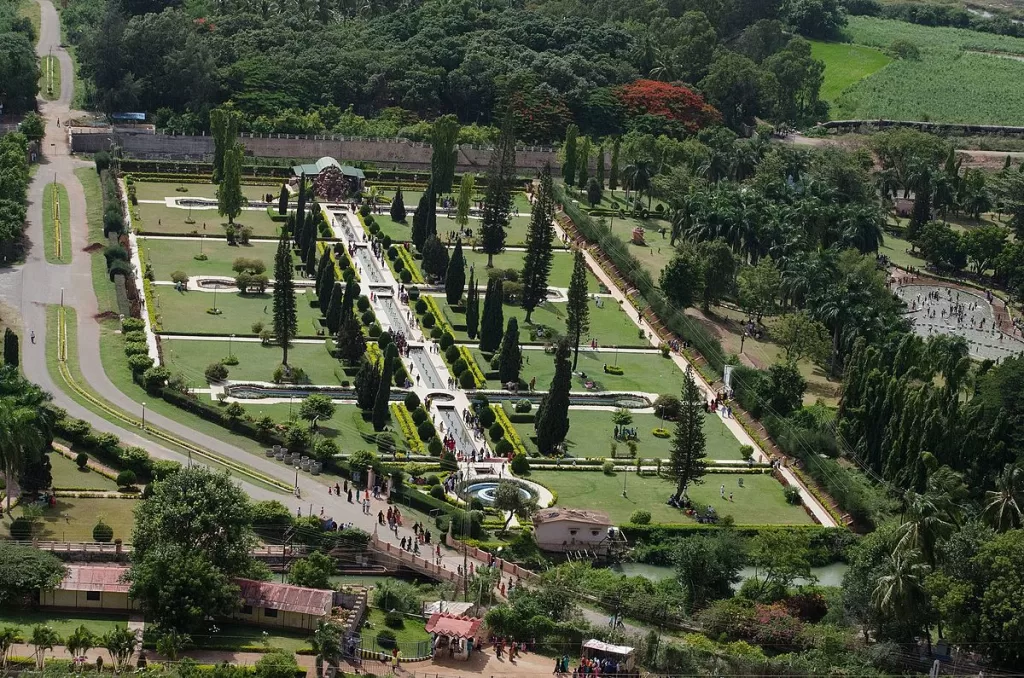
Brindavan Gardens in Mysuru mesmerises with its impeccable integration of hardscape and softscape elements. The hardscape, characterised by symmetric pathways and terraces crafted from enduring materials, pays homage to Mughal and Persian influences. This structured canvas seamlessly intertwines with the softscape, where lush lawns, vibrant flower beds, and strategically placed trees soften the geometric precision. Cascading fountains and water features further enhance the hardscape, creating a fluid connection between the built environment and nature. The result is a visual masterpiece where the artful blending of hardscape and softscape elements transforms Brindavan Gardens into a tranquil haven, inviting contemplation and appreciation.
The artful fusion of hardscape and softscape is the cornerstone of landscape design, creating outdoor spaces that are both functional and aesthetically captivating. Hardscape elements, with their durable structures and architectural precision, lay the groundwork for defined spaces. Meanwhile, the living tapestry of softscape, comprising plants, trees, and flowers, adds a dynamic, ever-changing dimension. Together, they weave a narrative of balance, inviting individuals to immerse themselves in environments where sturdy paths meet vibrant foliage. In the symphony of hardscape and softscape, the allure of nature and the elegance of design converge, transforming landscapes into vibrant, harmonious retreats.
Content Writing And Research By: Ar. Rochelle Dayal
The post Dynamism of Hardscape and Softscape in Landscape Design appeared first on The Architects Diary.
Leave a Reply